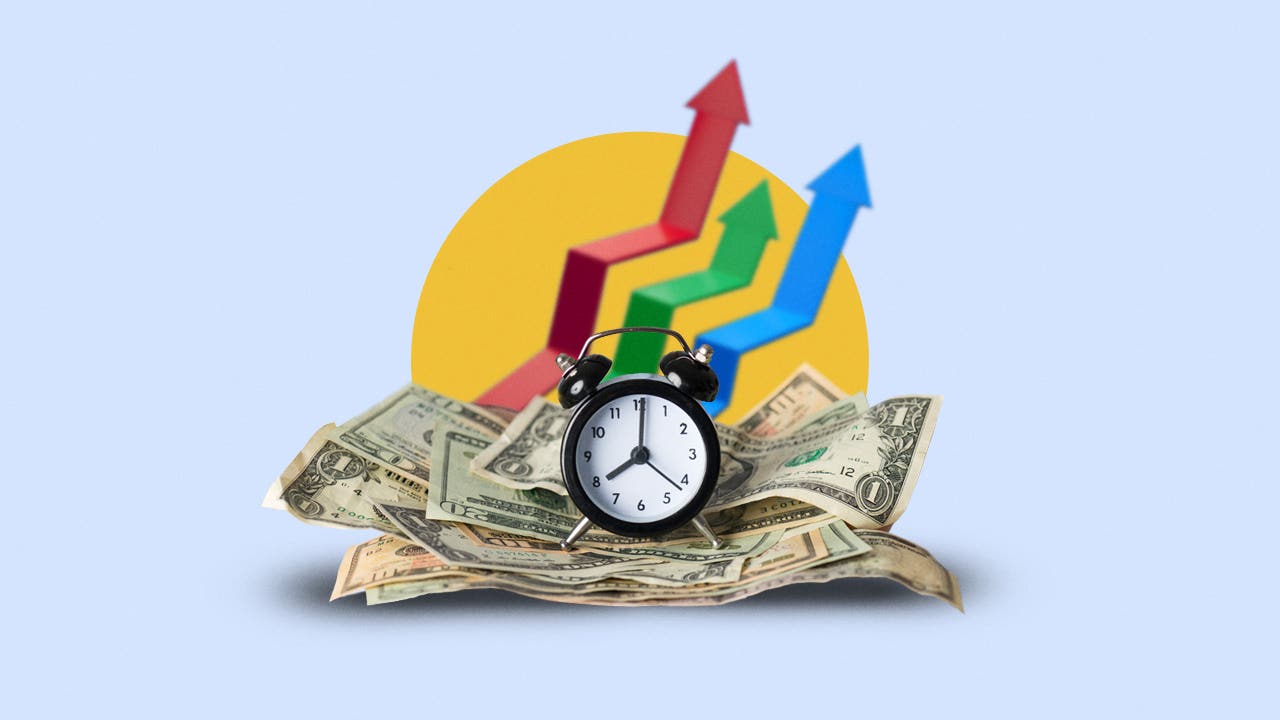Day trading: What it is and how to get started

Day trading is an active investment strategy that involves buying and selling securities within a single trading day. The goal is to profit from short-term market fluctuations. However, while the potential for quick profits can be tempting, the risks and challenges of day trading are significant.
Here’s what you need to know about day trading, common day trading strategies and its risks.
How day trading works
Day traders typically use technical analysis to identify potential trading opportunities, focusing on patterns and trends in price movements rather than a company’s long-term prospects or financial fundamentals.
Day trading can take place in nearly any marketplace but is most common in the foreign exchange, or forex, and stock markets. It’s important to note that day trading is not a get-rich-quick scheme — it requires knowledge, discipline and a well-thought-out strategy.
Traders utilize different strategies such as swing trading, arbitrage or momentum trading to capture potential profits. They typically leverage advanced charting software to analyze price patterns and trends. Trades are often executed using limit orders to manage risk and protect against substantial losses.
Day traders may hold positions for mere seconds or minutes, or they may keep trades open for the entire trading day. However, they aim to close all positions by the end of the trading day to avoid potential losses from overnight market fluctuations.
What is a pattern day trader?
A pattern day trader is a person who executes four or more trades within a five business day period, according to the Financial Industry Regulatory Authority (FINRA), which oversees firms and brokers in the U.S. The number of trades executed in the five-day period must also represent more than 6 percent of your total trades in the account. If a trader meets these criteria, they will be subject to additional regulations and requirements set by FINRA.
How to start day trading
The first step in day trading is self-assessment. You need to understand the markets, have sufficient capital and a high tolerance for risk.
Next, you need to develop a trading strategy and integrate it into a larger trading plan. This plan should include your entry and exit points, how much capital to allocate to each trade and your maximum acceptable loss. It’s also crucial to research the best online brokers for day trading and pick one that fits your transaction frequency and cost considerations.
Third, familiarize yourself with the markets and securities you plan to trade. This includes understanding trading hours, holiday schedules and how different news events might impact your trades.
Finally, consider practicing your strategies through a trading simulation or a demo account before risking real money.
Common day trading strategies
Day traders employ a variety of strategies to capitalize on short-term price movements. Here are a few common ones:
- Scalping: This practice involves making numerous trades throughout the day in an attempt to profit from small price changes. Scalpers aim to enter and exit trades quickly to capture small profits, which can add up over time.
- Fading: This contrarian strategy involves short-selling stocks after rapid upward moves, under the assumption that the stock will revert to its previous price. Fading is risky because it goes against the prevailing market trend.
- High-frequency trading: Utilizing powerful computer programs to make a large number of trades at extremely high speeds, high-frequency traders exploit minute inefficiencies in the market to generate profit.
- Spread trading: This approach involves the simultaneous buying and selling of related securities to capitalize on a predicted movement in their price relationship.
- Momentum or trend following: This strategy involves trading on news releases or finding strong trending moves supported by high volume. The key is to identify the momentum before it happens, then get in and out of the trade quickly.
What does it take to be a successful day trader?
Successful day trading requires a combination of knowledge, skills and discipline. An understanding of financial markets, technical analysis and trading principles is key.
Essential skills include the ability to analyze charts and indicators quickly, identify patterns and make swift decisions. Successful day traders are also patient, waiting for the right opportunities to execute trades based on their strategies.
Day trading is not for everyone. In fact, it’s not for most people. It requires meticulous planning, a well-thought-out strategy and the discipline to stick to your plan.
How much money do you need to day trade?
An occasional day trader can start with almost any amount of money, but if you do significant volume, you’ll be classified as a pattern day trader. Pattern day traders must maintain at least $25,000 in equity in their trading accounts at all times. The $25,000 is required prior to any day trading and you can’t meet the requirement by cross-guaranteeing separate accounts.
Failure to meet these requirements may result in the trader’s account being closed or restricted. Day traders must understand the regulations and maintain their account balances accordingly. In addition, some brokers may require clients to have a higher minimum equity level to trade.
Risks and rewards of day trading
Day trading carries significant risks. While the potential for quick gains may be alluring, it’s not an effective strategy for the average person.
Risks of day trading
- Financial loss: Due to the short-term nature of trades and market volatility, day traders can experience substantial financial losses.
- High stress: Day trading requires constant monitoring of the markets and rapid decision-making, which can lead to high stress and emotional fatigue.
- High costs: Day traders often face high transaction costs, which can eat into their profits, and must pay taxes on their capital gains.
- Emotional trading: The rapid pace of day trading can lead to emotional decision-making, which can result in significant losses.
- Market risk: Economic events, news announcements, and other factors can all lead to rapid market shifts, potentially causing substantial losses.
Potential rewards of day trading
- High profits: Successful day traders can make significant profits due to the high volume of trades they perform.
- Independence: Day traders can work from anywhere, at any time, offering a level of independence that many other jobs do not.
- Learning opportunities: Day trading offers continuous learning opportunities. Successful traders keep up-to-date with market developments and continuously adapt their strategies.
How day trading compares to other trading methods
Day trading, swing trading and long-term investing are all different trading strategies, each with its own timeframes, objectives and risk profiles.
- Swing trading operates on a slightly longer timeframe than day trading, with trades typically held for several days to weeks to capture a longer move in a security.
- Long-term investing involves buying and holding assets for months or years, aiming to benefit from long-term trends and compounding gains. It also requires less time and effort than day trading.
Is day trading right for you?
Determining if day trading is right for you involves assessing your personal circumstances, financial goals and risk tolerance.
Day trading is not suitable for everyone. It requires a significant investment of time, a deep understanding of markets and the ability to stomach potentially massive losses. Most importantly, you should only trade with money that you can afford to lose.
Before considering day trading, it’s essential to do your research, understand the risks and be prepared for the significant time commitment required. Most investors would be better served taking a buy-and-hold strategy with a few of the best index funds. It’s not as exciting as day trading, but it’s a tried-and-true way to build wealth long term.
Bottom line
Day trading is a high-risk, high-reward strategy that requires an understanding of market dynamics, a well-thought-out trading plan and lots of discipline. While it’s possible to get rich, almost all day traders lose money. If you’re considering becoming a day trader, it’s critical to understand the risks involved and be prepared for the possibility of financial loss.






